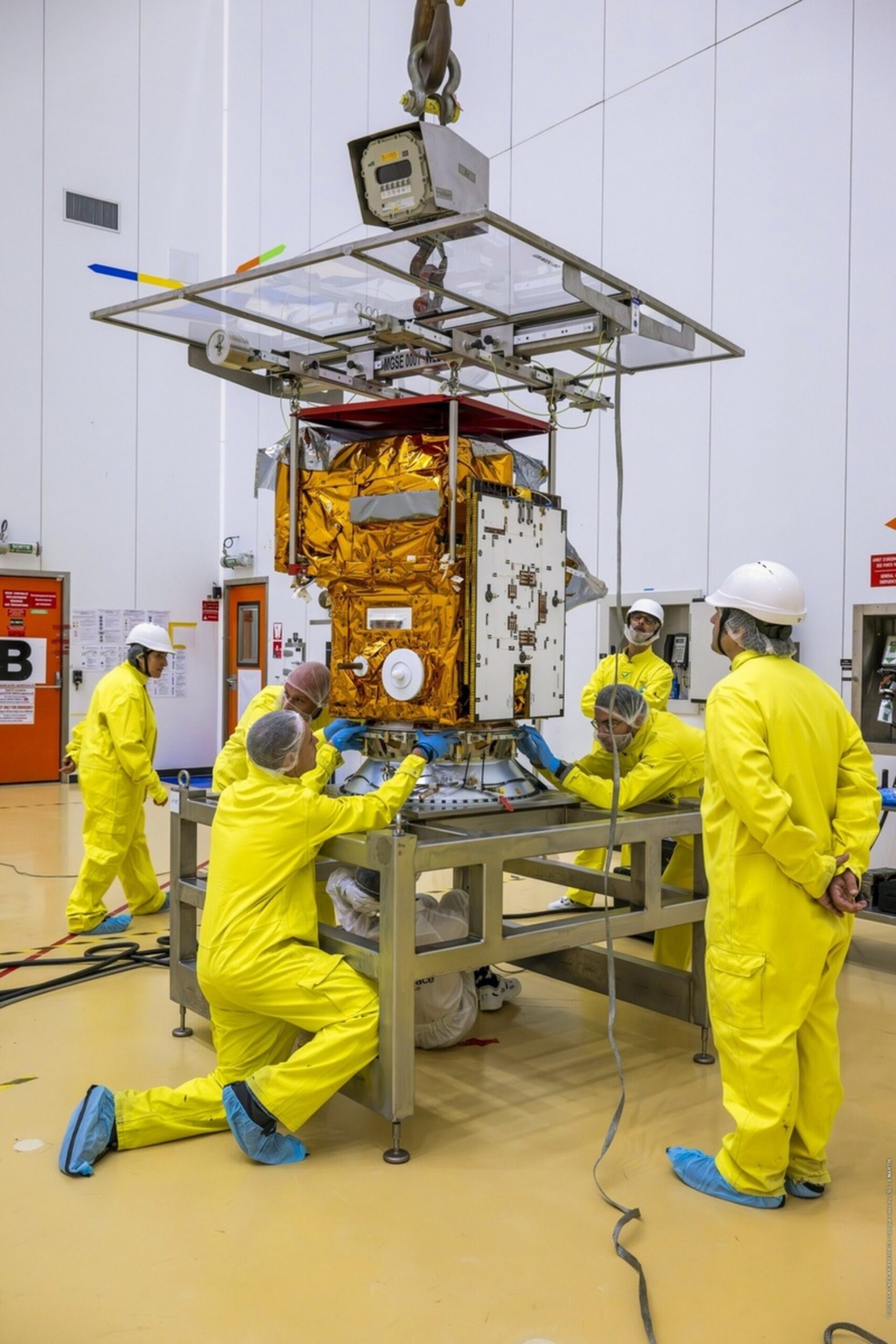Key Takeaways
- The MicroCarb mission, launched on July 25, will track carbon dioxide emissions globally to enhance climate change understanding.
- Equipped with an infrared spectrometer, MicroCarb will analyze sunlight reflections to measure CO2 concentrations in the atmosphere.
- The mission is part of the European Commission’s initiative to improve greenhouse gas monitoring, leading toward the future Copernicus satellite constellation.
Mission Overview
The MicroCarb mission, spearheaded by the French space agency CNES, aims to monitor atmospheric carbon dioxide levels to better identify the primary sources and sinks of this crucial greenhouse gas. The mission was successfully launched on July 25 atop a Vega-C rocket from Europe’s Spaceport in French Guiana, marking a significant achievement within the European Space Agency’s (ESA) In-Orbit Demonstration and Validation (IOD/IOV) programme, managed on behalf of the European Commission.
The central question the MicroCarb mission seeks to answer is: where is most of the planet’s carbon dioxide produced and absorbed? By mapping global carbon dioxide emissions and uptake, the mission intends to provide valuable insights into how this greenhouse gas contributes to climate change. The satellite is equipped with an infrared spectrometer, which analyzes sunlight reflected off the Earth and oceans to assess carbon dioxide levels in the atmosphere.
ESA’s Patrick Kerhousse, who oversees the IOD/IOV programme, outlined the mission’s data transmission capabilities. As the MicroCarb satellite gathers data on carbon dioxide concentrations, this information will be relayed to ground stations. A dedicated Product Data Processing (PDP) unit will process the substantial data volume to extract precise carbon dioxide measurements and make them accessible to the scientific community.
ESA’s involvement in the MicroCarb mission encompasses two main aspects: coordinating the launch service for the Vega-C rocket and supporting the preparation and integration of the PDP into the mission’s ground segment. This groundwork was essential to ensure seamless operation once the satellite is in orbit, fulfilling the European Commission’s goal of technological independence and competitiveness.
The IOD/IOV programme extends beyond merely facilitating launch opportunities. It includes preparing the ground segment—essentially the operational backbone for managing spacecraft. The PDP unit, critical to the MicroCarb mission, is being developed and will be operated by the European Organisation for the Exploitation of Meteorological Satellites (Eumetsat) in Darmstadt, Germany.
MicroCarb is also positioned as a precursor for the European Union’s Copernicus Greenhouse Gas Monitoring and Verification Support. The data provided by this mission will lay the groundwork for the upcoming Copernicus Anthropogenic Carbon Dioxide Monitoring (CO2M) satellite constellation, which will further enhance the monitoring of greenhouse gases.
The MicroCarb satellite, equipped with state-of-the-art technology, was constructed by Airbus in France, while its assembly was executed by Thales Alenia Space UK in collaboration with the UK Space Agency. The successful Vega-C flight was managed by Arianespace, cementing a collaborative effort across various European agencies and entities in pursuit of climate monitoring advancements.
The content above is a summary. For more details, see the source article.















